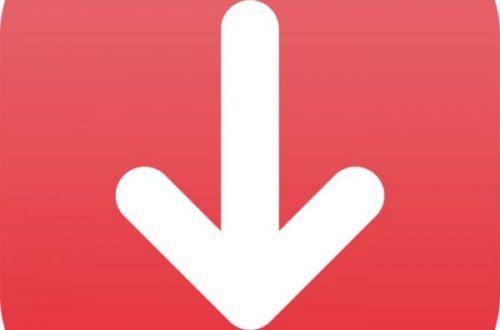French Black Friday
We know the American “Black Friday”: the day after Thanksgiving (which was yesterday), some run in stores to benefit from the many discounts and sales of up to 50 to 60%, sometimes reaching 80-85 % (especially for TVs and other rapidly outdated electronic products).
They line up in front of stores in some cases on Thanksgiving day at midnight, or even at 8pm and rush in to enjoy bargains … Black Friday is followed by “Cyber Monday” the following Monday (while “Black Friday” is also available online) and they spend a whole week-end shopping and making “deals”, and this is another facet of the American dream … Besides in the United States every holiday offers the opportunity for more or less spectacular sales: at 4th of July and Christmas of course, but also at President’s Day or Labor Day among others.
But we know less the French “Black Friday”, and for good reason: it is quite new. According to the media it started in 2010 when Amazon initiated it online in Europe, including France. I would say that in brick and mortar stores it started only 2 or 3 years ago. And for the moment it does not have the same size as in the United States.
Although I don’t know if the French “Black Friday” will last or if we’ll let it go in a few years, like other American traditions (such as Halloween), by now discounts rarely exceed 30%. In fact sales are about 15 to 20% quite generally.
Moreover their rules are often quite drastic: discounts apply only from 2 or even 3 items bought or only for some unsold items … It remains within French trade mindset: very small discounts compared to what happens in the USA. I would even say that there is some pettiness on the part of French storekeepers and you have often the feeling that there is a battle between marketing experts of big brands and the sale persons and owners of franchised stores: marketing experts advertise a lot by emails and e-newsletter on relatively modest sales and discounts, but sales anyway, and clerks and shop owners do their best to let you get the least possible!
I made some purchases yesterday at H & M. I’m not a regular customer and I went to their store yesterday because I was looking for specific items. At the checkout the saleswoman told me that I could become a member through my email and have a 10% discount as a welcome offer. I accepted and we registered for their newsletter right there.
Once I got home, I received the famous newsletter that announced “Black Friday” the next day with a general 20% discount! In the meantime we had unpacked certain items and so I could not make a classic return (with non-detached tags etc.)
I went back today and asked one of the cashiers if she could apply the -20% discount instead of the -10% I had benefited. Her answer was without appeal “Of course not! It’s too late! You knew about Black Friday today!” It turns out that no, I had no idea that there was a French “Black Friday”! I didn’t pay attention last year, and in 2014 I was in the USA! Actually a young saleswoman, apparently her boss heard me and told me “ok I’ll make a virtual return for you to let you benefit from the -20%”, and at the same time she tried to convince the other saleswoman that my request was reasonable! Apparently it was not for the 1st saleswoman who said to me with vexation “you know you will lose your welcome offer of -10%, right?!” (Which was supposed to be usable until August 2017) I told her I was ok, however she still looked to take it personally and seemed disappointed and annoyed!
This anecdote had an ultimately favorable outcome, probably because H & M is an international chain which is more willing to apply Anglo-Saxon standards. In my experience, in French stores, they usually favor short-term gain rather than customer loyalty.
For sure the gap between French and American traders behavior remains a mystery to me: Americans do their best to make your shopping journey easier, you can often return an item even without the purchase receipt, only with the debit or credit card you used for the purchase, even without the price tag, often within 90 days, whereas in France each of these “missteps” is sanctioned by a refusal of the item. In France you often have 30 days, sometimes only 15 days to return an item, with receipt and tag duly attached, in many stores they only give you back a credit worth, sometimes valid only through 2 months! Yet US traders are more than ever prosperous and even the word “business” is English!
As for the concept of the “loyalty membership”, it is extremely restrictive in France (and I think that in a few years it has even worsened!): More and more often in children’s stores (clothing, toys), you have to pay to own a loyalty card. The loyalty card offers advantages such as “1 € = 1 point, after 200 points you have 8€ discount” (so after having spent 200€, you have 8€ gift certificate …), and you have “A gift voucher of 8 € for the birthday of your child, if you spend 40€”! Even if they have your cell phone number and your email (more and more often mandatory!) you aren’t warned by text or email about your virtual voucher when approaching the birthday of your child! And the voucher is often valid only through 15 days before and 15 days after the birthday of your child, so you have a good chance to miss it! This happened to me last year with my loyalty cards at 2 children’s clothes labels (“Du Pareil Au Meme” and “Z generation”), which each costed me 4€ when I purchased the loyalty card (and when I protested, the saleswomen answered me in the same unpleasant tone “well, we do not systematically send a reminder, it’s up to you to come at the birthday of your child!”) I didn’t renew the loyalty membership this year.
At “Vertbaudet” (another children’s clothing brand) there has been even a double display for 2 years on price tags: you don’t pay the same price depending on whether you are a member of the club or not. I noticed this new rule when we came back from the USA in January 2015 and the method displeased me so much that even though I used to regularly buy items there, I didn’t return again!
In another style, “Paul” stores (bakery, pastry shop, tea room, etc.) are also reluctant to apply the customer advantage that goes with the loyalty card (free this time) and the greatest confusion reigns over the rules: some stores don’t add any point to your account at checkout if you have activated a customer advantage this time when some others do.
These complicated calculations and these everlasting discussions with traders are very annoying and I hesitate more and more to accept or purchase loyalty memberships. Sometimes I act like yesterday: I take a one-off offer (welcome offer) and then I unsubscribe from their listings. In fact, it is often more profitable to be a new customer than a loyal customer. Formerly this rule applied mainly to Internet providers and mobile operators, but this seems to have become widespread.
French traders work in mysterious ways!



